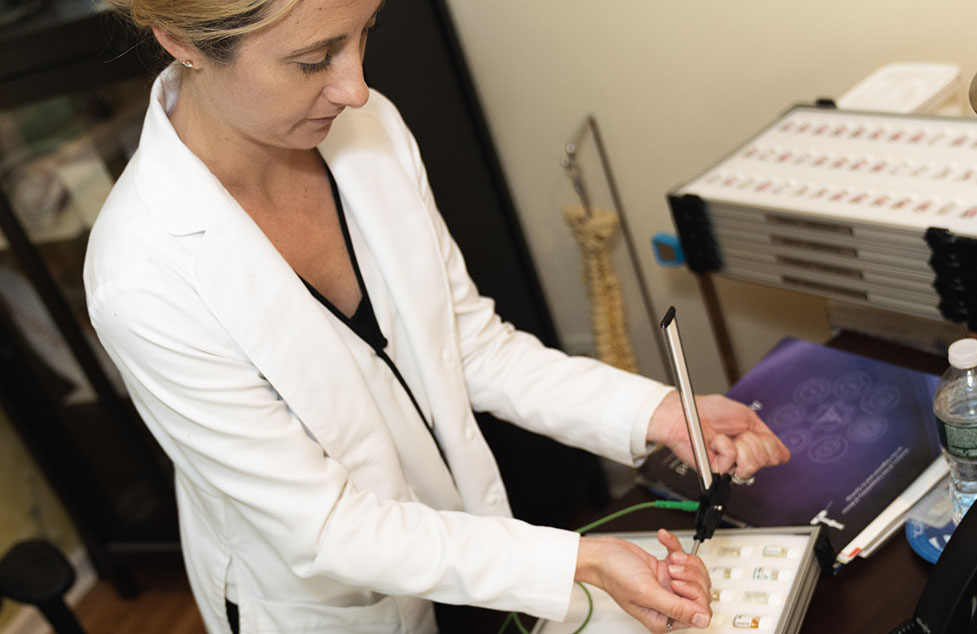Introduction to Acupuncture
Acupuncture is a form of traditional Chinese medicine where practitioners use thin needles to stimulate various parts of the body. Acupuncture was first documented in The Yellow Emperor’s Classic of Internal Medicine in China, dating back to 100 BCE. By targeting specific areas, the goal of acupuncture is to balance the flow of energy, also known as qi, in your body. Qi flow responds to nerve stimulation either by pressure, heat, or using fine needles, helping restore and regulate function.
Benefits of Acupuncture
Benefits of acupuncture tend to center around relieving discomfort. There are several areas of pain relief in which acupuncture can be helpful. This includes low back and neck pain as well as pain caused from the most common cause of arthritis – osteoarthritis.
Acupuncture can also help relieve menstrual cramps and dental pain. Headaches are often treated with acupuncture including tension headaches and migraines. Patients use acupuncture to treat migraines as well as prevent them from occurring.
In addition to pain, acupuncture can be helpful in relieving nausea caused from chemotherapy or anesthesia.
How Acupuncture Works
By stimulating various nerves and tissues, acupuncture is thought to restore the function of your body’s energy, or chi. Tiny stainless steel needles (around the thickness of a strand of human hair) are inserted into the skin by a health practitioner. These needles are disposable and new ones are used every time, for every patient to maintain cleanliness.
The practitioner may tap the needle in place, twirl them, heat the needles, or charge them with a small electrical current depending on their training and intention for your treatment. Patients typically don’t feel the needles being inserted as they’re so thin, but you may experience something called ‘de qi sensation’ which is a tingling, heaviness, or numbness during the session.
The needles are kept in place for 20-30 minutes while you are in a comfortable, but still, position.
See how we can help you restore complete health of body, mind & spirit.
Join our mailing list and receive exclusive offers + information!
Behind the Science
Science & Safety
A randomized trial comparing acupuncture, simulated acupuncture, and usual care for chronic low back pain Arch Intern Med
Acupuncture is often used to treat low back pain. In a 2009 study involving 638 adults with chronic low back pain, acupuncture was found to be effective at reducing back-related dysfunction and symptom bothersomeness after eight weeks.
Effectiveness of acupuncture for low back pain: a systematic review Spine (Phila Pa 1976)
A systematic review of trials exploring the effectiveness of acupuncture on low back pain found strong evidence supporting the use of acupuncture for low back pain. Acupuncture was noted to be useful as a supplemental treatment when used with other types of traditional therapy.
Acupuncture for migraine prophylaxis Cochrane Database Syst Rev
A 2016 meta-analysis found acupuncture had higher response rates (meaning the intended goal was met) and fewer headaches when compared to no preventative treatment or routine care only. This analysis evaluated nearly 4,500 participants across 22 trials. Researchers concluded prophylactic acupuncture for migraines is as effective, possibly more effective, than prophylactic drug treatment. Acupuncture also has fewer side effects when compared to traditional medications used to prevent migraines.
Acupuncture for tension-type headache Cochrane Database Syst Rev
Another meta-analysis evaluating the benefits of acupuncture on tension headaches found a small, but statistically significant, benefit of acupuncture in treating tension-type headaches. Authors concluded acupuncture could be used as a value non-pharmacological treatment for patients with episodic or chronic tension headaches.
Acupuncture for patients with chronic neck pain Pain 2006
A German study of over 14,000 patients with chronic neck pain showed acupuncture to improve pain and disability when combined with routine care versus routine care only. Benefits were noted at three months and maintained through six months.
Patients undergoing chemotherapy treatment can experience something called
Acupuncture to treat persistent CIPN from taxane or platinum-based chemotherapy J Clin Oncol
Patients undergoing chemotherapy treatment can experience something called Chemotherapy-Induced Peripheral Neuropathy (CIPN). There is growing evidence that acupuncture can improve CIPN symptoms. Although most studies have been small (10-98 patients), acupuncture has been shown to reduce the severity of CIPN symptoms as well as prevent progression of symptoms when used prophylactically.
Spectrum
Where does Acupuncture fall on the medical spectrum?
Acupuncture falls under ‘Energy Medicine’ section of the medical spectrum.
Receiving Therapy
Acupuncture Treatment Protocol – Receiving Treatments
At the New York Center for Innovative Medicine, our clinical team utilizes a sophisticated method of balancing energy from France called the ACMOS Method. This technique is an advanced form of energy balancing, comparable to acupuncture without needles. Because each person is unique, and their health needs are different, there is no set protocol for using ACMOS method nor is the patient able to request the use of this therapy if the medical team finds it would not be as helpful as another treatment or specific combination of therapies.
-
See if ACMOS Energy Balancing is right for you.
- This advanced therapy, similar to a needle-less acupuncture, has many benefits.
- Take the Quiz
More Info
Resources & Experts
- The Science Behind How Acupuncture Helps Relieve Pain
YouTube Video
- Innovative Medicine: The ACMOS Method
YouTube Video
Frequently Asked Questions
What is acupuncture?
Acupuncture is a traditional Chinese medicine technique meant to balance the energy in your body or its qi.
How does acupuncture work?
Acupuncture works by inserting tiny needles into specific areas of the body.
What is acupuncture good for?
Acupuncture is used to treat various types of pain including back pain, neck pain, migraines, and labor pain.
How long has acupuncture been around?
Acupuncture has been around for thousands of years and originated in China with first documentation as far back as 100 BCE.
Schedule Now
NYCIM
Contact our world-renowned clinic and see if an advanced form of energy balancing, comparable to acupuncture without needles, would benefit you.
or Contact Us


















